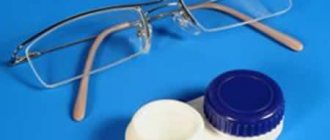UV eye protection
Scientists say that sunlight is good for the eyes, that it is a kind of nutrition for the optic nerve. However, if there is a lot of it, you should protect your eyes with optics and protect your vision.
In strong sunlight, your eyes simply need extra protection. Sunglasses that transmit ultraviolet light will help with this, weakening the strength of the violet and blue spectrum. If there is little sunlight, you can rely on natural protection so that the eye tissues are sufficiently charged with sunlight.
If you can’t make a choice, try to decide on the type of protection. The filter type and barrier indicator are indicated by manufacturers on a special insert. Some additionally specify the conditions under which the use of glasses is recommended. There are five types of protection for solar optics filters:
- “0” – minimal protection from ultraviolet radiation of all types, light transmission 80 – 100%;
- “1” and “2” – categories of medium partial protection. The first category transmits from 43 to 80% of light, and the second – 18–43%;
- “3” is an excellent solution for a beach holiday, visits to nature, and daytime city walks. Filters transmit no more than 18% of light;
- “4” – for hot countries where the sun does not spare either the eyes or the skin. The light transmittance of a dark filter is 3–8%.
You can choose sunglasses that suit your face, but do not forget about light transmission.
Which glasses should you choose?
The choice of the right sunglasses must be taken with full responsibility; the purchase should be determined not only based on the type of protection, but also on other equally important parameters, such as size, color, conditions and place of purchase.
Wearing unsuitable glasses leads to extremely negative consequences: fatigue, headache, retinal damage, and the development of cataracts.
How to avoid a bad purchase
| Unsuitable glasses | Rationale |
| Low security | They will not be able to protect their eyes from the active sun. They are an additional accessory for wearing in the evening and cloudy hours. |
| With small lenses | They will not be able to fully protect from the sun. |
| Counterfeit brands | As a rule, they only copy fashionable designs and do not provide protection from UV rays. |
| Red, orange and blue lenses | They distort color and irritate the retina. It is not recommended to wear it for more than two hours at a time. |
| Purchased in non-specialized stores | Risk of purchasing glasses that do not contain a sun barrier. |
| With a transition from one color to another | Eyes get tired quickly. |
| Inappropriate size (tight, too big) | Uncomfortable fit of glasses provokes the penetration of ultraviolet radiation onto the unprotected surface of the eye. |
| The load of the frame is on the cheeks. | Penetration of dangerous sun rays into the eyes. The load should be distributed on the bridge of the nose. |
Important to remember! Cheap glasses with simple dark lenses of different colors, purchased at local retail outlets, usually contain only dye and do not have protective filters.
Wearing such glasses is extremely dangerous. Don’t skimp on your health; well-chosen high-quality sunglasses will become not just a stylish accessory, but also a reliable protector of your vision.
How to choose sunglasses by type of protection, watch this video:
Looking at the world through colored lenses
For many, sunglasses are a fashion accessory. But first of all, they are designed to protect human eyes at any time of the year. The choice should be approached responsibly, because poor quality ones will cause harm to health instead of benefit. In this matter, an important role is played by a person’s attitude towards wearing solar eyepieces and how determined he is to protect his vision.
The benefit of high-quality sun protection products is that they protect the visual organs from solar and ultraviolet radiation. When purchasing a product, it is important to consider the season in which you are going to wear it. The higher the solar activity, the higher the filter protection rating should be.
Effect of solar radiation (ultraviolet) on the eyes
Prolonged exposure to the sun without special protective glasses can cause adverse effects on vision. Maximum precautions in sunny weather should be taken by those who have poor health or various ophthalmological diseases.
The most unsafe periods for eyes not protected by special glasses are the early morning and the afternoon. If the sun is located low, its harmful effect on the eyes increases several times.
When such rays are reflected from a large surface of water bodies, the level of negative effects of ultraviolet radiation increases. In the process of selecting such products by type of protection, it is advisable to take into account exactly what effect rays of this type have on unprotected or poorly protected organs of vision.
What damage can the sun cause to your eyes?
Exposure to the sun's rays can seriously damage your eyes. If ultraviolet radiation is not blocked by glass, it gradually accumulates in the body, which contributes to the formation of a huge amount of free radicals. They destroy ribonucleic acids and protein compounds.
The pathological process leads to decreased vision and other ophthalmological disorders. Often the result is: damage to the cornea by altered conjunctival tissues, the appearance of dry eye syndrome, photokeratitis, cataracts, solar retinopathy.
The natural filter of ultraviolet radiation, the lens, suffers most from exposure to ultraviolet radiation. It almost completely absorbs the sun's rays. The protein compounds of the lens are destroyed, the structure of the elements of the visual apparatus changes, and the elasticity of the lens decreases.
Remember, even short-term observation of a solar eclipse without eye protection leads to decreased vision, which is subsequently only partially restored.
How to choose the right sunglasses
- if you have eye diseases or vision problems, you should consult an ophthalmologist before choosing solar optics;
- You cannot shop at markets or stalls. It is recommended to carry them out in specialized stores;
- eyepieces must be equipped with special markings, an insert indicating how much ultraviolet rays the lenses transmit, whether they are able to adapt to the brightness of the light or remove glare;
- car drivers are recommended to wear glasses with photochromic lenses; for relaxing in snowy mountains - with polarized lenses;
- The shape of the lenses and frames are also important; the products should fit well, not dangle or squeeze. The best way to find the perfect fit is to try it on;
- ask the seller what material the lenses and frames are made of and their quality.
How to choose sunglasses, what to look for when buying
Choosing sunglasses will be easy if you reduce all the important points of the process to a single list:
- First of all, you need to pay attention to the degree of protection from ultraviolet and infrared radiation. If you plan to wear the accessory in urban environments or rarely in nature, then you can opt for small indicators. Living in places with active sun requires the purchase of lenses with a high degree of protection.
- The level of light transmission is also important. Even if glasses protect your eyes from the sun as much as possible, this does not mean that they do not let light through. But the less it passes to the eyes, the more comfortable a person feels. You need to remember that for traveling in a car, for the city, you can buy glasses with light lenses, in all other cases with distinctly dark ones.
- Plastic frames are only suitable for freestyle, but if a person is often forced to attend negotiations, meet with investors and partners, and prefers a business style in clothing, then you should pay attention to products with a metal frame.
Watch the video on how to choose sunglasses:
As for the shape of lenses and frames, these are individual parameters and there simply cannot be general recommendations. The main thing is to know your face type and take this as a basis when making a choice.
Which frame to choose for glasses
Today, optical stores have a huge range of frames made from various materials. The most popular are plastic frames. They are made from optyl, nylon, grilamid, cellulose acetate, and other materials that are easy to process. Any frame design can be made from plastic.
You can choose a frame from any material. Plastic is a durable, strong material that allows a small amount of sunlight to pass through. They are lightweight and have good strength.
You can choose a metal frame, for which Monel (an alloy of copper and nickel), aluminum, or titanium are used. If you opt for metal, choose steel frames. Sometimes wooden inserts are inserted into the frames.
Frames are also made from natural materials – horn frames. They are high quality, reliable, and environmentally friendly. However, they have a minus - the frames are very heavy, which may not be to everyone’s liking.
Hold the model you like and bend it a little. A high-quality frame immediately restores its shape. Open and close the temples of your glasses. Check how securely the screws on the arms are attached. Glasses should look perfect, fit your face, be convenient, and comfortable.
What to choose – glass or plastic lenses
Most people are sure that only glass lenses should be used in quality glasses. But that's not true. Modern plastic lenses are not inferior to glass ones in optical properties.
Plastic is smaller than glass and distorts the image.
Plastic lenses are lighter than glass and are much more comfortable to wear.
Plastic is safer; if damaged, it does not crumble into small fragments, unlike glass, which can damage the eyes and face.
Plastic ones are more reliable as they are impact resistant.
Glass lenses also have a number of advantages:
- More scratch resistant.
- They have better light transmittance.
Regarding the issue of protecting the eyes from ultraviolet radiation, today both plastic and glass lenses, if they are manufactured in accordance with all quality standards, block the ultraviolet rays of the sun well.
Today you can easily choose fashionable, high-quality sunglasses that will be reliable, functional, and beautiful at the same time.
Features of polarized glasses
The main useful property for which such glasses are used is to protect the eyes from blinding glare that appears due to the reflection of the sun's rays from many surfaces. These glares can appear when light hits the road surface, the surface of reservoirs, snow lying on the ground, roofs and walls of various buildings.
Reference! The unique qualities of polarized glasses are manifested thanks to a special filter, similar to a thin liquid crystal film, placed between layers of glass or plastic.
Glass color and tint level
Lenses come in different levels of darkness. The level is marked with numbers from 0 to 4. The number is determined depending on how much visible light the glass transmits. The lightest ones are marked 0, the darkest ones – 4.
Marking 0 or 1 on the label indicates that the product will not protect your eyes from the bright active sun. For a hot summer day, a shade of 2 or 3 is enough to keep your eyes safe. And dark lenses marked 4 are chosen for holidays on the sea coast, for a ski resort.
The level of darkness of the lenses must be indicated on the attached label.
Another important point: the lorgnette should darken, not change color. Having chosen, look at three colors: green, blue, red. If the colors are not distorted, then the quality is good.
Lenses must protect the eyes from solar radiation and have ultraviolet protection properties. Gray, green, and brown lenses are considered the safest for the eyes. The most dangerous colors are blue, red and pink.
Another important point is that the glass should darken and not change color. You have chosen glasses in the store, try them on, look at the 3 colors: red, blue, green, if the colors are not distorted, then the lenses are of good quality.
How to choose glasses according to the type of protection?
Pay attention to the markings on the glasses. Only lenses with the UV-400 mark will provide 100% protection against ultraviolet radiation - they completely prevent the penetration of UV radiation. The smaller the number on the marking, the weaker the protection. It is also possible to specify protection against specific types of rays, that is, UVA and UVB.
There is another marking: from 0 to 4, where 0 is only 5% protection against UV rays, and 4 is 95% protection. This marking may also indicate the degree of darkening of the lens.
To maximize the safety of your vision, it makes sense to buy glasses with different types of lenses. For example, in cloudy weather it is worth protecting your eyes with clear lenses or glasses with a gradient.
To protect your eyes in moderately sunny summer conditions, standard glasses with medium-tinted lenses and a UV barrier are suitable. But for a trip to the sea or to the mountains, it is better to get special optics - with very dark or mirror lenses. These glasses provide better protection from the bright sun.
People who need vision correction should pay attention to glasses with photochromic lenses, which darken in the sun and remain transparent indoors. But they do not provide full protection against ultraviolet rays, so you should only use them in the city, and for the beach it is better to purchase special optics.
For a trip to the mountains or the sea, it is worth buying glasses that block the sun's glare.
Additional protection is provided by glasses with polarized lenses - they block glare, which helps minimize eye fatigue in the sun.
Are all sunglasses useful?
Alas, not all glasses are equipped with the necessary filters that protect the eyes from ultraviolet exposure. Although today, even among cheap models, you can find high-quality solar optics, a certain share of the market is still occupied by Chinese counterfeits.
Such glasses not only do not protect your vision, but also cause additional harm to it: due to darkened lenses, the pupil is constantly dilated, as a result, even more unfiltered sunlight penetrates into the eyes than without glasses. Long-term exposure to UV radiation damages the retina and leads to significant vision impairment.
How to check sunglasses at home?
If you want to make sure that your glasses are providing adequate protection to your eyes, use a UV flashlight, which you can easily buy online. The average cost is about 300 rubles.
If the glasses have UV filters, the flashlight will not shine through the lenses and the shadow from the glasses will be complete, as if it were a solid structure. If you received low-quality optics, only the frame will cast a shadow, while the lenses will easily transmit light from the flashlight and, accordingly, harmful radiation.
Photochromic and polarized lenses
The following information will help you decide between polarized and photochromic lenses and make the right choice.
The presence of a polarizing filter indicates that the glass has a special coating that blocks glare and reflections. Therefore, for those who decide to choose high-quality sunglasses for staying at resorts, you need to pay attention to models with good polarization. Such a filter cuts off the reflection of light from wet asphalt, ice, and water.
Polarized lenses provide comfortable, clear vision. Recommended for elderly people, car enthusiasts, patients after retinal surgery, and those relaxing near the water.
Photochromic lenses change the amount of light transmitted depending on the intensity of UV radiation. They are used in chameleon glasses that darken in bright sunlight and lighten in its absence.
On sale you can find glasses with lenses that combine photochromic and polarizing properties.
How to check polarized glasses when purchasing
There are three known ways.
- Hologram. Look at the hologram, indistinguishable without glasses; stores usually have them. Just ask the seller for it.
- Smartphone. Turn on the display to maximum brightness, set a white background, bring polarized glasses to your eyes, turn them vertically 90°, the lenses should darken to complete opacity.
- Two in one. Put on the glasses, present the second (same) ones at a distance of 10-15 cm from the first, slowly turn them to an angle of 90°. The lenses should completely darken; if partial transparency remains, this means that the filter in some of them does not polarize 100%.
Leave your choice on polarized glasses, since ordinary ones will not be able to protect your eyes as effectively as they do.
Other nuances of choosing sunglasses
Before purchasing, it is recommended to carefully inspect and try on the product. You can open the temples several times and bend them slightly. High-quality models are resilient and elastic. They keep their original shape well. The screws that secure the temples must be strong.
If the frame is small, the temples will diverge, put pressure, and quickly become unusable. If the frame is large, a gap will form between the face and the side of the product. For high-quality optics, the frame dimensions are indicated on the temple. You also need to pay attention to the nose pads. When wearing glasses, there should be no gap between the frame and the nose.
What else you need to pay attention to when choosing quality glasses:
- Decide which lenses you prefer: plastic or glass.
- What level of shading is needed?
- Be sure to check for the security label.
- Don't forget about the color of the lenses.
Where to buy and how much they cost
The answer to the question of where you can buy sunglasses is very easy: almost everywhere.
The main thing is that you know the rules for choosing quality models. Whether the place of purchase will be a kiosk or a company store, this is not so important.
Buy only branded glasses that guarantee high-quality ultra protection.
Remember that real models that are designed to protect your eyes are not suspiciously cheap.
Many optical stores have equipment for checking light transmission and degree of protection. You can easily check the selected model.
How much do sunglasses cost?
The cost of glasses with lenses ranges from 2 to 10 thousand rubles.
Plastic lenses and frames will cost a little less, from 700 to 3 thousand rubles.
Sunglasses with high ultraviolet blocking rates of at least 2 - 5 thousand rubles.
The more famous the brand, the higher the price. Exclusive models can cost tens and even hundreds of thousands of rubles.
Mask-shaped or sports glasses will cost more than regular glasses because they have an increased degree of protection and additional accessories. Their approximate cost is 5 – 7 thousand rubles.
Models with decorations and unusual designs are more expensive than classic ones. Approximate price 5 – 15 thousand rubles.
Sunglasses and Face Shape
When choosing glasses, focus on your face shape. Experts identify 4 forms and now we will tell you which sunglasses will suit which face. However, remember that everything is very individual. The following statements apply to both women and men.
Round face
If you have a round face, then it is better for you to take a closer look at square frames and avoid round shapes.
Oval face
People with an oval face shape can choose any glasses - they are the lucky ones on whom all glasses look good. However, this does not negate the importance of fitting - after all, the glasses still need to “sit” on the bridge of the nose.
Triangular face
People with this face shape can safely buy cat-eye glasses or any round frames.
How to check sunglasses for quality
High-quality pince-nez should protect not only from bright sunlight, but also from ultraviolet rays. Ultraviolet rays are very dangerous for vision and cause serious diseases. Therefore, be sure to make sure that the model you choose filters ultraviolet radiation. Don't forget that high-quality optics preserve your vision.
How to buy quality glasses, not counterfeit ones:
- Check out your passport.
- The brand must be duplicated on the glass, on the inside of the bow.
- The insert indicates the ultra protection indicator, the level of darkness, and other characteristics.
- When wearing glasses, objects should not be distorted.
- The glass darkening is uniform.
- The frame is made with high quality, the screws are tightly tightened.









